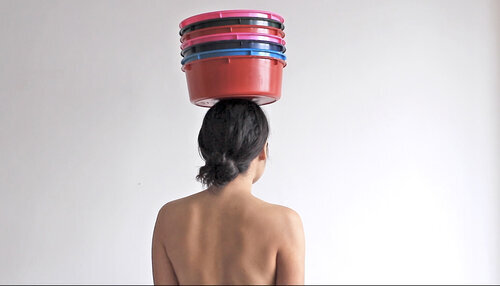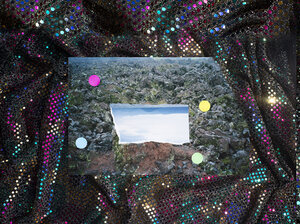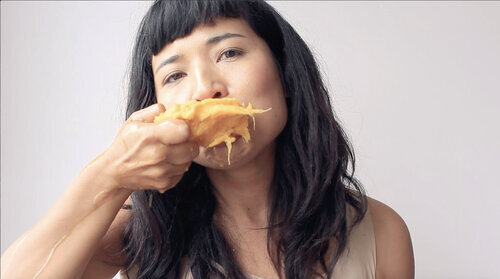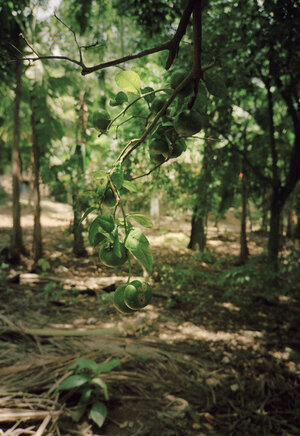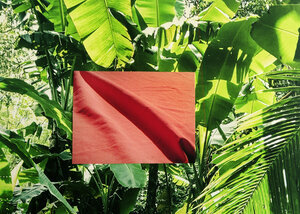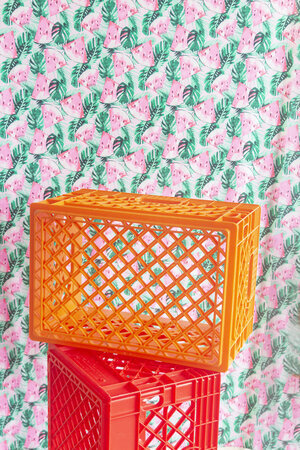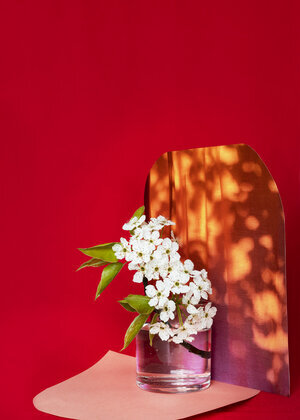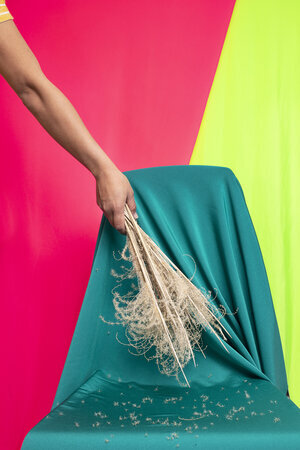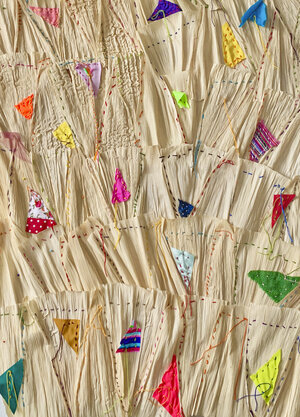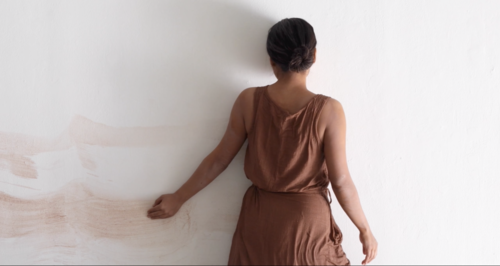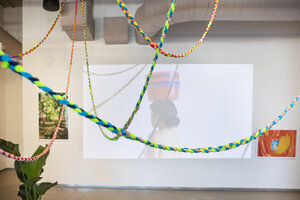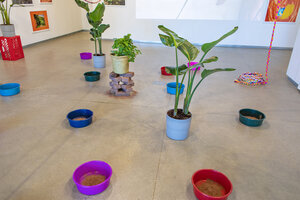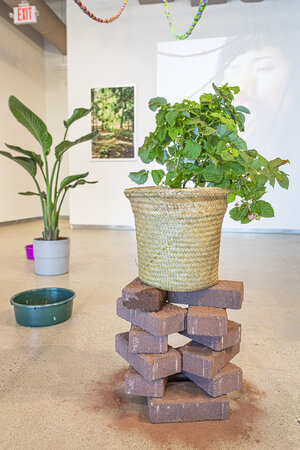This Must Be the Place
ROY presents: Lorena Molina
Fri, Jun 12, 2020 - 6:00 PM
Sat, Jul 4, 2020 - 3:00 PM
Home and belonging are highly political desires for people that have experienced displacement because of war. During the last four years, Molina has been exploring questions about identity in the margins. She sees this place where extreme violence and pain happens, but also as a place for resisting and thriving.
The installation will feature markers of making in the margins. It will include photographs, videos, raspberry bushes, banana plants, mangoes, and red clay. A long and bright braid made out of colorful fabrics will weave in and out the work.
This exhibition is a reconciliation and a celebration of the immigrant experience, as well as an acceptance that a home in the margins is a good home too. This home has real estate everywhere. The landscape is lush and with a full range. It has tropical weather, palm trees and the ocean. It has winters and snow too. It is adapting to the knowing feeling that something is always missing, but that is home too.
LORENA ANSWERS THE QUESTIONS THAT ROY ASKS
WHAT IS YOUR NAME AND WHAT PRONOUNS DO YOU USE?
Lorena Molina. She/Her
WHAT MEDIUM(S) DO YOU WORK WITH AND WHY?
I use photography, video, performance, and installation in my practice. I don’t feel bound to a specific medium. I usually think about what I'm trying to communicate and use the best medium that will get that message across. Sometimes, it’s great when it all comes together like in this installation.
HOW DID YOU BEGIN YOUR ARTISTIC PRACTICE?
I started really late in life. I was around 22 years old, when by chance I took a photography class in community college. I felt so purposeful and immediately in love. I wanted to spend all my time in the darkroom. It was a very scary transition, because I was a first generation college student, and nobody in my family has gone in the arts. I didn’t grow up going to museums or looking at art. I didn’t have a map to what a career in the arts should look like or how to go about it. I just knew that I liked taking pictures and I worked really hard. To be honest, I am both surprised and super lucky that I get to do this with my life.
WHO/WHAT ARE SOME OF YOUR BIGGEST INFLUENCES OR INSPIRATIONS?
My community, my family, my students, history, contemporary questions, issues and concerns, my dog, etc. As for artists, Ana Mendieta is close to my heart. As well as, Adrian Piper, and Guadalupe Maravilla.
YOUR WORK HAS A PARTICULAR EMPHASIS ON NATURAL IMAGES, MATERIALS, AND SETTINGS. WHAT ROLE, IF ANY, DOES ECOLOGY PLAY IN YOUR ART?
I’m not sure if ecology is something that I’m particularly interested in. But much of the pain and death of my people has been around struggles for the land. And also, when you’re displaced because of war, the landscape and natural markers of home become extremely political and meaningful. You miss everything and you ache for smells, sounds and sights. By me using certain plants, or fruits, I am trying to bring some of El Salvador with me. Some of California with me. Some of NY with me. My home in the margins is a hybrid of every place I loved and been loved.
Some plants are representations of a yearning, For example in the piece, This Must be the Place, I am thinking of raspberries as a symbol of belonging. I had my first raspberry when I moved to the United States. Since I immigrated here, I have not been able to stay in a place for more than a year and as many people know, raspberries take 2 years to fruit. My dream is to live in a place long enough to plant and grow raspberries. I see them as a foundation that I have finally made a place for myself that I can call home.
WHAT KINDS OF INTERACTIONS DO YOU HOPE TO FOSTER BETWEEN YOUR WORK AND THE VIEWER?
Different works have different interactions with the viewer. Most of my work is more confrontational. I am trying to make the viewer understand how they are complicit of the pain of others. How they benefit from oppression and imperialism everyday in their life.
This exhibition is very different. For the first time in my career, I am thinking about decadence, pleasure and beauty as political. I am thinking how this is something that some bodies are not allowed to experience. During the beginning of the pandemic, I started to think about my practice and how taxing and extremely painful it is to think about very difficult histories and events. I don’t ever not want to think about this and not make work about this history. I feel like this is not a luxury that me as a brown woman can have, especially when there are so little of us in these art institutions. My presence is always political. But I am also a person that deserves beauty, and slowless and lushness. I see all of this as a form of resistance. I see it as a way to care for myself and for others And yes, I do hope people enjoy the beauty and brightness of this exhibition. I do hope that brings them some joy as it did for me.
WE ARE NOW IN A TIME FULL OF SOCIAL AND POLITICAL UNREST. HOW DO YOU THINK YOUR WORK, WHICH FOCUSES ON IDENTITY AND HISTORICAL PAIN, HAS TO OFFER IN RESPONSE TO THE CURRENT CLIMATE?
We have always been in a time of social and political unrest. This country was “founded” with the genocide of indiginous people and the slavement of black bodies. When this is your history, political unrest will always be here and never leave until we really deal with this history. So in short, right now we are fighting for black liberation and I’m not sure what my work has to offer in response to this. I don’t need to take up space in the conversation. But personally, I know that I will be uplifting and fighting right alongside them.
Artwork is for sale and priced as marked. Artists receive 65% of sales and the 35% ROY retains is invested back into the gallery.
row 1 left > right ….to Cornfield $350; Naranja con Moscas $400; Balancing Act NFS; Lago Coatepeque $400; Mango Eating NFS
row 2 left > right El Playon $400; Limomn de la Finca de mi Papa $500; Entre Palmas $350; Finca $350; You should feel better $400
row 3 left > right Crates $350; Como una Bruja $350; Tracing NFS; Between Corn and Bananas NFS; Marking you/Marking me NFS;
row 4 installation of Trenzas NFS
View more of Lorena’s work here



